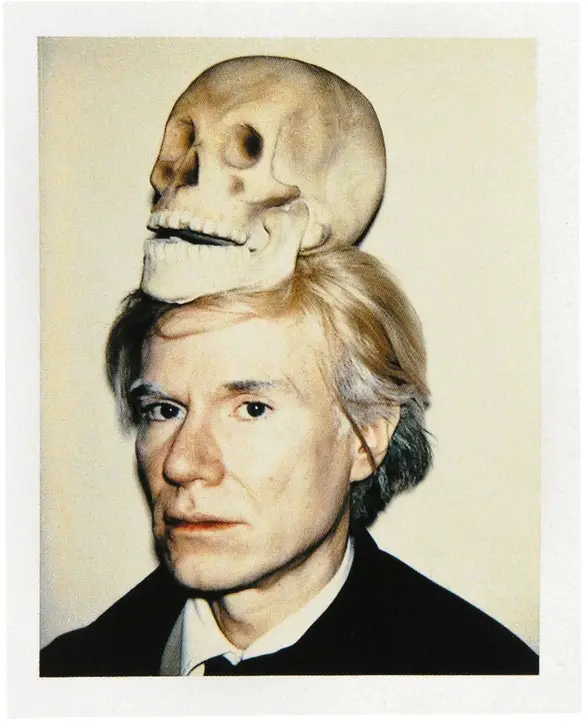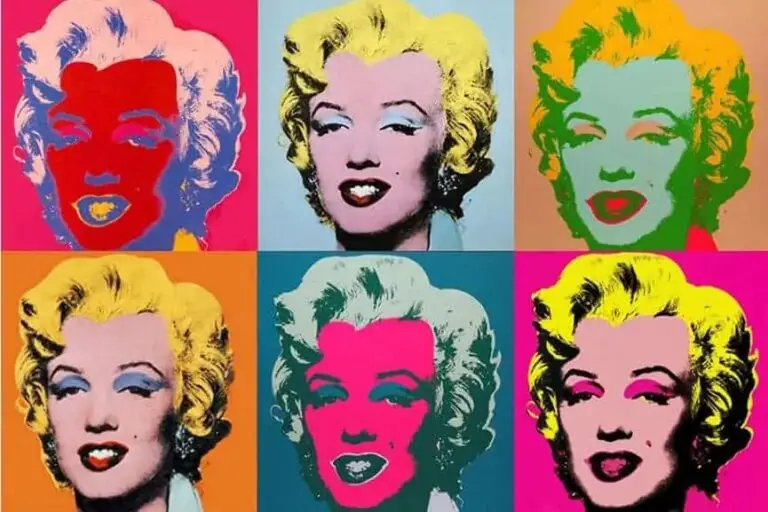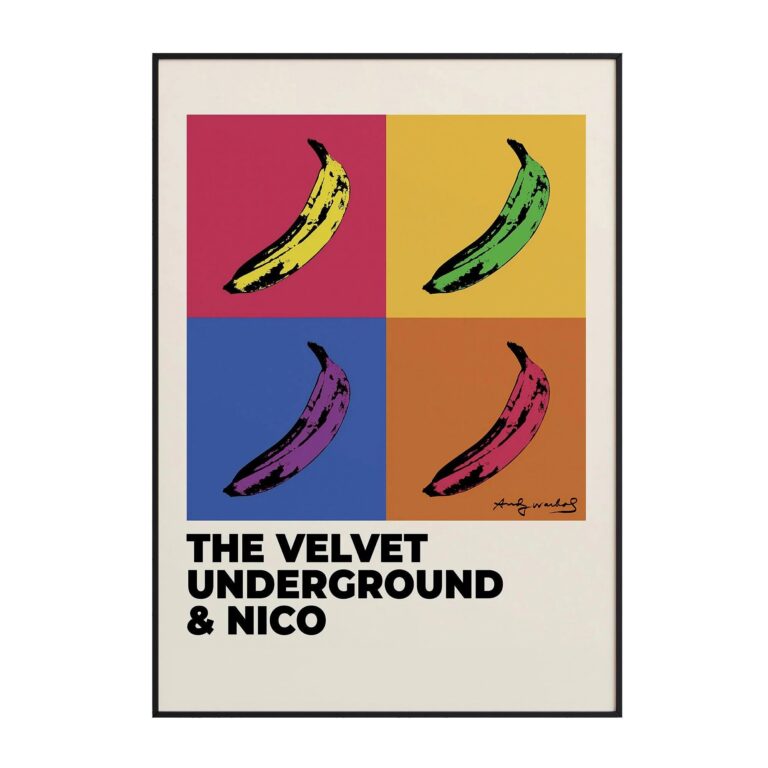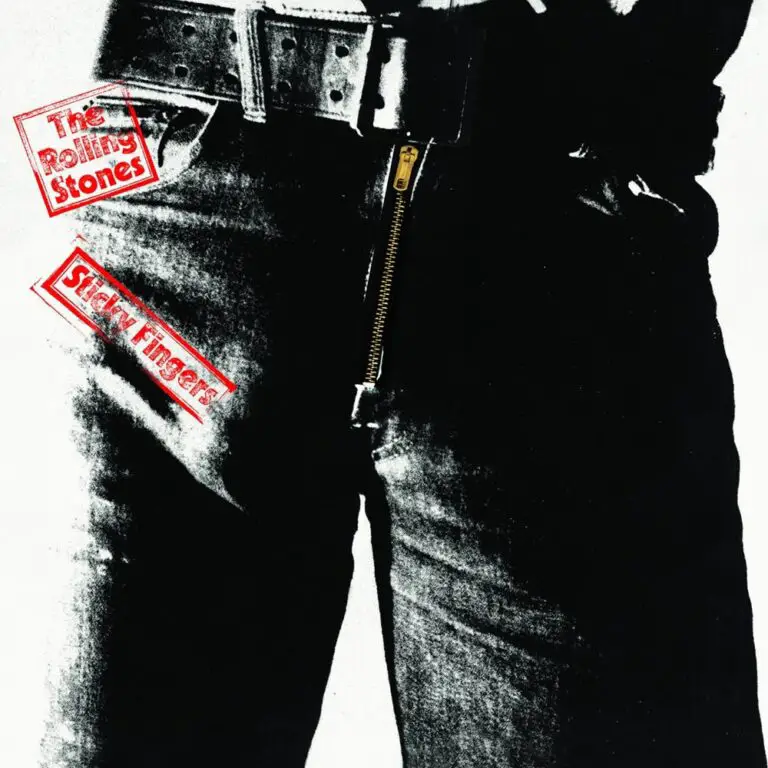Eccentric and creative are just two words someone could use to describe the Pittsburgh-based iconic artist Andy Warhol. From the timeless Campbell’s Soup Cans to battling Sydenham chorea, for decades Warhol seamlessly integrated himself into one of the most significant artists of the time and fit in seamlessly with the New York music and art scene.

Early Life and Hobbies
Andrew Warhola was born on August 6, 1928, in a working-class Pittsburgh neighborhood, in a two-room apartment. His parents, Andrej and Julia Warhola, were Carpatho-Rusyn immigrants from a region in the Carpathian Mountains in what is now Eastern Slovakia. They had three sons: Paul, John, and Andy, the youngest.
Warhol had Sydenham chorea as a child, a neurological condition that causes uncontrollable movements and is often referred to as St. Vitus dance. Warhol would periodically miss school due to the disease, during which he would read comic books and Hollywood magazines and experiment with paper cutouts. His family didn’t have many luxuries while living in Pittsburgh during the Great Depression, but when Warhol was eight years old, his parents gave him his first camera. Before enrolling in Schenley High School in 1942, he completed his basic education at Holmes School and attended free Tam O’Shanter art lessons given by Joseph Fitzpatrick at Carnegie Institute (now Carnegie Museum of Art).
After realizing his son’s potential, Andrej put money aside to send Warhol to Carnegie Institute of Technology, which is now Carnegie Mellon University, where he studied from 1945 to 1949. After graduating from art school with a degree in Pictorial Design, Andy moved to New York City to pursue a career as a commercial artist, and later dropped the last “a” in Warhola. Together with his classmate Philip Pearlstein, he moved and formed a close-knit group of friends that included dancer Francesca Boas and college friends Leila Davies Singeles.

Illustrator and Entrepreneur
Andy became a successful commercial illustrator on Madison Avenue in the 1950s during the heyday of advertising. He was hired to draw for Glamour, Vogue, and Harper’s Bazaar, to name a few, using a blotted line technique he created.
His work in the commercial scene taught him many tricks of the trade, and he would later use this advertising know-how in the world of high art in terms of branding and popularity. His time as a commercial illustrator was a major piece of the Warhol puzzle.
His artwork debuted in a Glamour magazine edition where he provided the illustrations for the story “What is Success?” This was an era where Warhol quickly became an award-winning illustrator and got hired to draw for these publications. Warhol was well-known for his blotted-line ink drawings, which he produced in the 1950s after perfecting his technique in college. By combining sketching and simple printed techniques, Warhol was able to generate numerous illustrations based on a single concept and to repeat an image. In response to demands from clients, he could also make swift adjustments to composition or color. His work in the commercial scene taught him many tricks of the trade that he would later use this advertising knowledge in the world of high art in terms of branding and popularity.

In addition to being an artist, Warhol was also an entrepreneur. In order to fund his creative endeavors, he began his work as a commercial illustrator, earning a sizable income. Growing up in the era of post-World War II consumer culture in the United States and England, Warhol saw the advantages of assembly lines in industry and used processes and studio personnel to help him produce art. He was also able to successfully combine avant-garde, underground work with commercial and entrepreneurial pursuits.
Repetition
After creating the infamous blotted line technique, and blending printmaking fundamentals with drawing, this process became crucial to his success as a commercial illustrator since it allowed him to present clients with multiple options. Famously joking, Warhol said, “I want to be a machine,” implying that he was interested in mass production. His most famous technique, photographic silkscreen printing, imitated the appearance of advertising campaigns. Warhol was able to experiment with different processes including registration (aligning colors on a single image), over-printing (printing one color on top of another), and color combinations while still receiving an accurate replication of his original works. In a sense, this was a true extension of what the 1960s were all about. People were buying plastic, dressing for fun, and demanding more options than ever before. The so-called “Pop Life” was a lot more colorful than at any other time in history. Pop art just means popular art. To put it briefly, it’s art for the masses, art for everybody. It was a lifestyle that was quickly gaining popularity as well as a cultural phenomenon that many artists were emulating.

In 1962, Warhol shifted to what is arguably his most famous technique “photographic silkscreen printing.” He was able to readily replicate the pictures he appropriated from popular culture because of this commercial procedure. He debuted his iconic Campbell’s soup cans in the same year, and would later exhibit painted screen prints of celebrities including Elizabeth Taylor, Michael Jackson, Elvis Presley, and most famously, Marilyn Monroe. The silkscreen process became his trademark. Before Warhol, silkscreen printing was mainly used for making wallpaper on a large scale. It was the perfect medium for his mass-produced art about a mass-produced culture.
Music
After making his name in the publishing world, the world saw Warhol move into the music scene and start to design album covers. Warhol worked with Craig Braun, an actor and a graphic designer and the two designed the cover for The Rolling Stones’s 1971 album Sticky Fingers, which was later nominated for a Grammy Award. Warhol had been commissioned previously for album cover designs and painted portraits, but in the 1970s he began to receive hundreds of commissions from socialites, film stars and of course music.

The newly emerging sounds of the era, especially with the legendary band the Velvet Underground, proved to be a natural ally for Warhol’s venture into performance art. Living in the same New York environment, Warhol and the Velvet Underground collaborated to create a new style that was a symbiotic relationship rather than just art affecting music or vice versa. As a result of their collaborations, the band created the multimedia spectacular known as the Exploding Plastic Inevitable, which left a lasting impression on music history. Warhol’s avant-garde graphics blended effortlessly with the band’s experimental sounds. With Warhol as their manager and artistic mentor, The Velvet Underground challenged conventional notions of rock music, embracing themes of urban decay, alternative lifestyles, and avant-garde experimentation. Their self-titled debut album, produced by Warhol and featuring Nico on vocals, remains a landmark in the history of music, influencing countless artists and genres in its wake.
The Exploding Plastic Inevitable, simply Plastic Inevitable or EPI, was a series of multimedia events organized by Andy Warhol in the 1960s, and featured musical performances by rock band The Velvet Underground and singer-songwriter Nico. EPI also included screenings of Warhol’s films, dancing and performances by regulars of Warhol’s Factory, especially Mary Woronov an actress, writer, and figurative painter, and Gerard Malanga a photographer and a poet. The EPI first started in an event staged on January 13, 1966, at a dinner for the New York Society for Clinical Psychiatry. This event, called “Up-Tight,” included performances by the Velvet Underground and Nico, along with Malanga and Edie Sedgwick as dancers and Barbara Rubin as a performance artist.
The EPI left a lasting legacy on Warhols name and influenced Andy Warhol’s lights engineer Danny Williams who pioneered many innovations that have since become standard practice in rock music light shows. From May 27–29 the EPI played The Fillmore in San Francisco, where Williams built a light show including stroboscopes, slides and film projections onstage.
Film maker Jonas Mekas (who pioneered film projections during concerts at New York’s Cinematheque), Andy Warhol and Danny Williams’ influential ideas contributed much to the legendary Fillmore Auditorium’s prestige and were also used at the Fillmore East and Fillmore West, both opening in 1968.
The influence of Warhol continued through the hallways of rock ‘n’ roll royalty, even outside of the Velvet Underground. His relationships with music icons such as Blondie, the Rolling Stones, David Bowie and the Cars highlighted his ability to move fluidly across different artistic genres. Warhol’s influence on these iconic bands’ visual identities, whether through album cover design or creative direction, is an everlasting tribute to his versatility as an artist.

However, Warhol’s artistic domain extended beyond the realm of music; His collaboration with poet Gerard Malanga, who later became his main printing assistant, exemplified the fusion of various artistic mediums. By examining the relationship between words and images, together they pushed the bounds of traditional craftsmanship and opened the door for a fresh generation of creative expression. Through events like the EPI, Warhol provided a platform for experimental musicians to reach new audiences and explore new sonic territories. His embrace of multimedia collaboration foreshadowed the interdisciplinary approach that would come to define the modern music industry, paving the way for future generations of artists to push the boundaries of creativity.
However, the most fascinating part of Warhol’s legacy might be his close ties with icons like Mick Jagger and John Lennon. These connections went beyond simple celebrity friendships; they were based on respect for one another and a shared vision/common goal of cultural innovation. Unquestionably, Warhol had an impact on both Lennon’s artwork and Jagger’s persona. This proves the lasting value of artistic collaboration.
Warhol’s influence on the history of music goes much beyond his work as a visual artist. His ability as a designer was demonstrated by the numerous classic record covers that had his distinctive visual style. From the ethereal charm of the Velvet Underground’s debut album to the slick sophistication of the Rolling Stones’ “Sticky Fingers,” Warhol’s creations came to symbolize the spirit of a time when artistic experimentation and experimental creativity were the norm.
Looking back, it’s clear that Andy Warhol’s influence goes beyond a single creative medium. He was a visionary whose influence still resonates in the modern artistic scene, having penetrated the cultural fabric of his period. Whether it’s through his creative poetic studies, his ground-breaking collaborations with musicians, or his enduring friendships with rock ‘n’ roll superstars, Warhol’s influence is timeless and serves as a constant reminder of the transforming potential of artistic innovation and collaborative effort.

Influences and Controversy
In certain aspects, Andy Warhol was a brand within himself. He completely reinvented his image by making bold fashion statements and dressing up in wigs and sunglasses day and night. Even though it was said that he had very sensitive eyes, he nonetheless set trends. He expanded beyond painting, printing, and film, publishing multiple books and even experimenting in sculpture, photography, and television. Decades after he first started creating art, his influences and duplicates can still be seen everywhere, from coffee cups to T-shirts. In many ways, he changed the way we see the world forever and his effect on modern art is still felt more than 50 years later.
From his 1950s illustration style and his silkscreen printing methods, Andys’ style is still widely used by modern artists, and the practice of utilizing everyday objects as artwork, which was unheard of before Warhol, is now popular in art galleries all over the world.
It is also possible to consider it in terms of personal branding. In the 60s, when Warhol was printing his own portrait over and over again, this was not the norm. But, it’s interesting how it affected the way his fans and people perceived him. People sharing their “personal brand” is something anyone with a social media account can do every day, subconsciously or otherwise. It’s just another example of how ahead of his time Warhol was. In the ultimate irony, the man and his artwork have become major brands, and his critique of consumer culture has ultimately become consumer culture. “Making money is art, working is art, and good business is the best art,” he said.
In the art world, Warhol was a quite a controversial figure and a mysterious individual. Not everyone agreed that his creations qualified as art at all. Some considered his art to be a masterfully satirical depiction of popular culture. Some thought it was absurd and fraudulent. One of the main criticisms leveled at his work was that it was “unoriginal,” which his defenders would argue that was the whole idea. The topic of whether originality affected the value of art created some uproar in the art world. Warhol gave voice to the idea that perhaps the meaning of an artwork lies not in its technical skill but rather in its idea. It’s the idea behind the artwork that’s important and never the skill used to make it.

Andy’s life and work were always intertwined. He once said, “If you want to know all about Andy Warhol, just look at the surface of my paintings and films and me and there I am. There’s nothing behind it.”
These kinds of cryptic remarks provide light on his peculiar manner and how frequently he irritated the public. Was there satire in his work? Was he mimicking pop culture and mass consumerism with his Pop Art? Or was his way of living and expressing himself a celebration of materialism?, Art critics are still debating his remarkable contradiction.
Andy Warhol had a big influence on the 1960s and later New York music landscape. Warhol helped to redefine the boundaries of music and art through his collaborations, experimental events, and lasting influence. This opened up new creative opportunities for upcoming generations of musicians and artists. His influence may still be heard in the varied and diversified soundscape of modern music, serving as a constant reminder of the lasting value of artistic experimentation and collaboration. There is no doubt about that, after Warhol, nothing was the same in the art world.


Comments are closed.